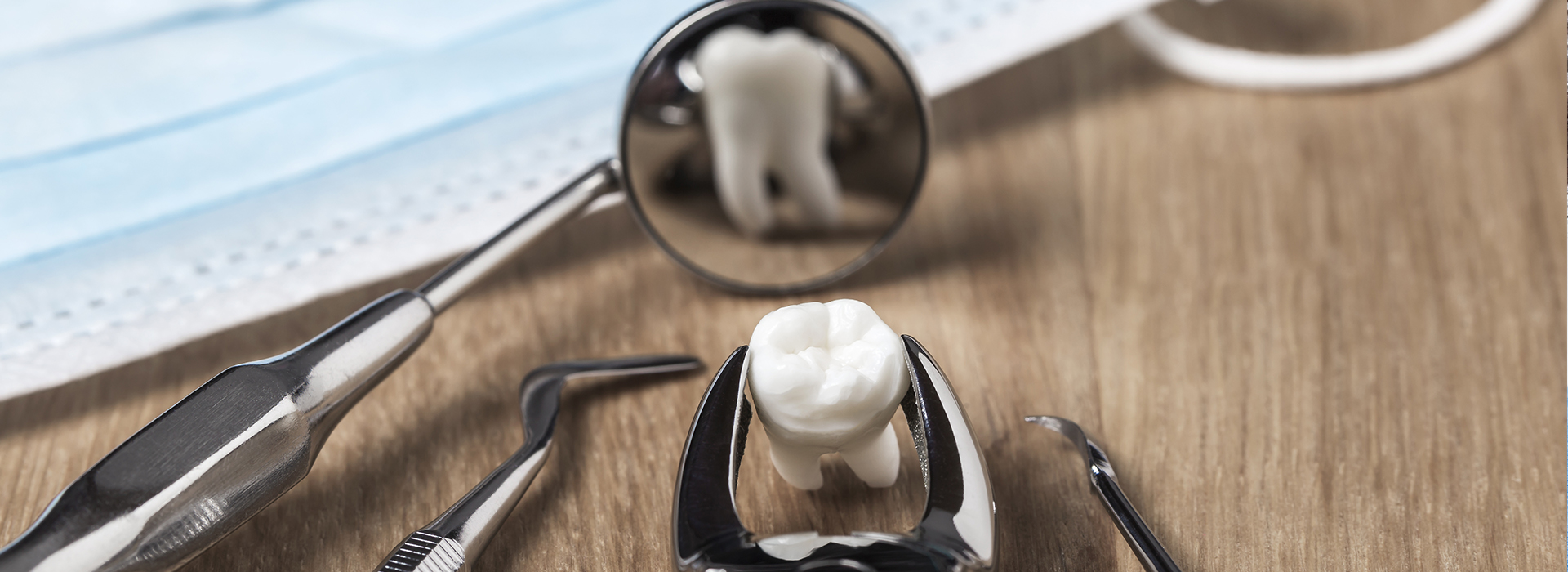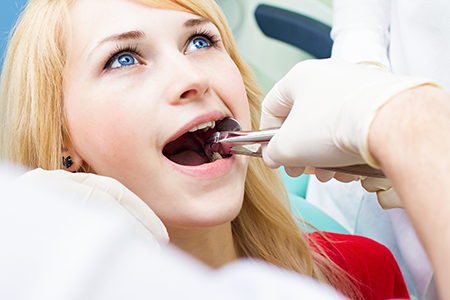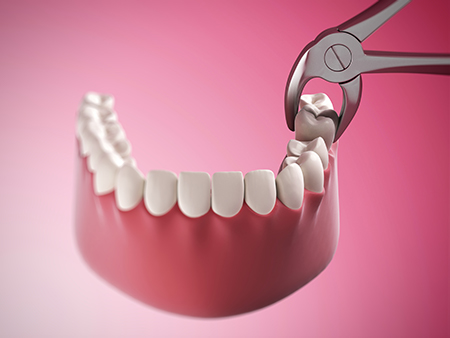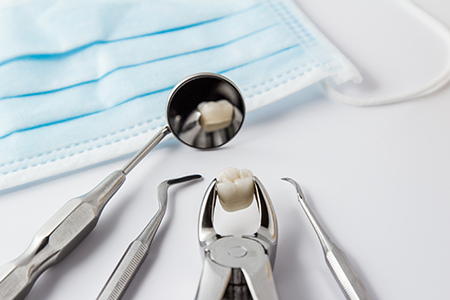
At our practice in Walton, KY, preserving natural teeth is always the priority, but there are occasions when removing a tooth is the healthiest, most responsible option. We approach every extraction with thoughtful planning, clear communication, and a focus on minimizing discomfort. Patients can expect a careful evaluation, an explanation of why extraction is recommended, and a collaborative discussion about what comes next.
Our team combines clinical experience with modern diagnostic tools to determine whether a tooth can be saved or if removal will better protect the surrounding teeth, gum tissue, and jawbone. We weigh factors such as the extent of damage, the tooth’s position, overall oral health, and long-term function before recommending extraction.
Comfort and safety guide our approach. For patients who feel anxious about treatment, we can discuss strategies to reduce stress and enhance comfort. In every case, the goal is to preserve your oral health and restore equilibrium to your smile as smoothly as possible.
Baby teeth that won’t fall out or are severely damaged
Sometimes a primary tooth remains firmly in place even as the permanent tooth below begins to emerge. This can happen when the baby tooth’s roots fail to resorb or the tooth becomes fused to the bone. Removing an over-retained baby tooth can prevent misalignment and help the permanent tooth erupt in the right position.
Permanent teeth with extensive decay that can’t be restored
Decay that penetrates deep into a tooth can compromise both structure and the nerve. When the remaining tooth is too compromised to support a filling or crown, extraction removes a source of ongoing infection and discomfort and protects adjacent teeth and tissues.
Teeth fractured beyond repair
A badly cracked or fractured tooth may lack enough sound structure to restore reliably. When fractures extend below the gum line or involve the root in a way that threatens long-term function, extraction becomes the best route to prevent recurring problems.
Advanced periodontal disease with compromised support
Severe gum disease can erode the bone and soft tissues that hold teeth stable. When a tooth has lost its supporting structures and cannot be stabilized, extraction can halt progressive infection and protect neighboring teeth.
Impacted or problematic wisdom teeth
Third molars commonly lack space to erupt fully and can become impacted, decayed, or a source of chronic irritation to nearby teeth and gums. Early removal is often recommended for third molars that are likely to cause trouble as a patient matures.
Extractions as part of orthodontic planning
When the jaw doesn’t have room for all the permanent teeth, selective removal of teeth can create space to achieve a balanced, functional bite during orthodontic treatment. Your dentist will coordinate closely with an orthodontist to plan which teeth, if any, should be removed.

Before any tooth is removed, we conduct a thorough review of your dental and medical history and perform a targeted clinical exam. Radiographs allow us to see the tooth’s root structure, its relationship to adjacent teeth, and any nearby anatomic features. This information helps determine whether a straightforward or more involved approach will be needed.
Please let us know about any medications you take and any health conditions you have, as some situations require special precautions or coordination with your physician. We’ll explain any pre-procedure instructions and answer questions about anesthesia, comfort measures, and what to expect during the appointment.
Our team prioritizes patient comfort throughout the visit. Local anesthesia is standard to numb the area, and for patients with heightened anxiety we can discuss options such as oral sedation. We tailor the plan to the individual, aiming for a calm, controlled procedure and a clear set of next steps for recovery.
When assessing the extraction, we generally classify procedures as either simple or surgical. The chosen approach depends on how the tooth sits in the mouth and whether additional access to bone or root fragments is required to remove it safely.
Simple extractions are performed on teeth that are visible in the mouth and have relatively straightforward root anatomy. After the area is numb, the dentist gently loosens the tooth and removes it with forceps. Most of these procedures are brief and well tolerated when patients follow pre- and post-op guidance.
We take care to control bleeding, protect surrounding tissues, and provide clear instructions for the hours and days following the extraction. If you’re nervous about the appointment, discussing sedation or relaxation strategies ahead of time can make the experience more comfortable.
Surgical extractions are necessary when a tooth is broken at the gum line, has roots that are curved or fused, or is impacted beneath the bone. These procedures often involve a small incision in the gum, careful removal of bone if needed, and sectioning the tooth into pieces to extract it with minimal trauma.
For complex cases we may collaborate with or refer to an oral surgeon. Regardless of the setting, patients receive anesthesia and a detailed plan for post-operative care, including pain control and wound monitoring to support predictable healing.

Healing after an extraction varies by person and by the complexity of the procedure, but there are clear habits that support recovery. We provide individualized post-operative instructions that address wound care, activity levels, diet, and any medications prescribed to manage pain or prevent infection.
Immediately after the appointment you’ll be asked to maintain gentle pressure over the socket with gauze until bleeding subsides. Rest for the balance of the day, avoid strenuous activity, and follow specific guidance about oral hygiene to avoid disrupting the forming blood clot.
Swelling and mild discomfort are normal; cold compresses applied intermittently during the first 24 hours and taking pain medication as directed usually control these symptoms. Unless otherwise advised, switch to warm saltwater rinses after the first 24–48 hours to soothe the area and help keep it clean.
Controlling bleeding
We place gauze to help a clot form. Keep steady pressure and change the gauze as directed. Some light oozing can continue for a day, but if bleeding is heavy or persistent, contact the office.
Protect numb tissues
Avoid chewing or touching numb lips, cheeks, or tongue until normal sensation returns to prevent accidental injury.
Follow medication instructions
Antibiotics:
If an antibiotic is prescribed, take the full course exactly as directed to reduce the risk of infection.
Pain management:
Start your pain control plan before the anesthetic wears off if possible. Over-the-counter options or prescribed medications should be used according to instructions.
Protect the clot
Avoid rinsing vigorously, spitting forcefully, sucking through straws, or smoking during the initial healing period to preserve the blood clot and reduce the risk of dry socket.
Reduce swelling
Apply an ice pack to the face intermittently during the first day; this helps limit swelling and provides comfort.
Avoid tobacco
Smoking or using tobacco products hinders healing and increases complication risk. Refrain for at least the first week following extraction.
Eat thoughtfully
Stick to cool or lukewarm soft foods for the first few days and stay well hydrated. Avoid very hot, spicy, or crunchy foods that could irritate the area.
Keep your mouth clean
Gently brush nearby teeth but avoid disturbing the extraction site. After the first couple of days, rinsing with a mild warm saltwater solution can aid cleanliness.
Attend follow-up care
If stitches were placed or a more complex extraction performed, a follow-up visit may be scheduled to check healing and remove sutures if needed.
If you notice increased bleeding, severe or worsening pain, prolonged swelling, lingering numbness, or any unusual symptoms, contact the office promptly for evaluation.

Replacing a missing tooth is an important consideration for function, appearance, and long-term oral health. When appropriate, we discuss replacement options such as removable dentures, fixed bridges, or dental implants. Each option has distinct benefits, and we help patients evaluate which solution aligns with their needs, anatomy, and goals.
Dental implants are often recommended when the aim is to closely recreate the look, feel, and function of a natural tooth. Bridges and dentures remain valuable solutions in many clinical situations. We’ll review the pros and cons of each and plan timing for replacement so that bone and soft tissues can be managed effectively after extraction.
Prevention is equally important. Regular checkups, targeted periodontal care, and timely treatment of decay or trauma reduce the likelihood of future extractions. For complex needs, we coordinate care with specialists—such as oral surgeons and orthodontists—to create comprehensive, long-term plans that maintain both health and confidence in your smile.
Richwood Family Dental combines clinical experience with a patient-centered approach to make extractions as predictable and comfortable as possible. Our team emphasizes clear communication, careful technique, and individualized aftercare so each patient understands the plan and feels supported through recovery.
Whether the tooth requires a simple removal or a more involved surgical approach, we tailor the treatment to the patient’s overall health, comfort level, and long-term goals. When needed, we will refer to or coordinate with specialists to ensure the highest standard of care.
After an extraction, we take the time to review replacement options and prevention strategies so patients can make informed decisions about restoring function and protecting their smiles for years to come.
In summary, tooth extractions are performed thoughtfully and with patient comfort as a priority. If you have questions about whether extraction is the right choice, or you would like to learn about replacement and recovery options, please contact us for more information.
The most common reasons for tooth loss include advanced periodontal disease, extensive tooth decay, and facial trauma. According to statistics, gum disease is responsible for close to 70% of tooth loss in adults. Although less frequent than the preceding three reasons, it should also be noted that specific diseases, drugs, smoking, and poor nutrition contribute to the risk of tooth loss.
The Centers for Disease Control and Prevention report that in the United States, an average of 12 teeth (including the wisdom teeth) are lost by the age of 50. Also, 26% of adults between 65 and 74 years of age have lost all their teeth.
Every patient and every situation is different. However, when a tooth and the surrounding tissues are numbed with a local anesthetic, you should only expect to feel a bit of pressure, but no pain as the tooth is being loosened from the surrounding tissues and extracted. For patients who are apprehensive and for some surgical extractions, our office will discuss our options in dental sedation to provide further relaxation and reduce any sense of discomfort.
While it's normal to feel some tenderness and swelling following an extraction, the degree of these sensations can vary. It mostly depends on the complexity of the extraction and the body's response to the procedure. We'll recommend or prescribe the appropriate pain medication to help ensure your comfort and give you specific instructions for maximum effectiveness and safety.
Typically, the recovery period following a simple extraction is shorter than a surgical extraction. However, a patient's overall health, habits, the size and location of the tooth, and other variables can influence recovery and healing. To speed up the recovery and avoid any complications, patients must follow the given at-home instructions diligently. We'll carefully review what to expect following your procedure and go over your post-op instructions.
Smoking interferes with blood clot formation, which is an essential first step in the healing process. Blood clot formation not only provides a protective layer to cover the underlying exposed bone and nerve endings, but it also supports the growth of new tissue. Cigarette smoke also contains chemical toxins that can disrupt the healing process and lead to problems such as continued inflammation, infection, or dry socket.
In a very small percentage of cases, a condition known as dry socket can develop in the aftermath of a dental extraction. This painful condition can arise when the blood clot in the extraction site doesn't form properly or gets dislodged. With dry socket, you may experience throbbing pain and symptoms such as bad breath and an unpleasant taste in your mouth. As skilled providers of care, our office will provide immediate treatment to alleviate your discomfort and promote healing.
The last teeth in your mouth to develop, wisdom teeth often do not have enough room to fully erupt or may be positioned in the wrong direction. These issues can affect your dental health as well as overall wellbeing. While some individuals never develop all their wisdom teeth, and a few have sufficient space for them, there are many people with partially or fully impacted third molars. Our office will monitor the development, position, and health of your wisdom teeth and will advise you if and when extractions are indicated.
After a tooth is removed, bone-grafting material is sometimes placed in the socket to promote healing and encourage new bone development. This procedure is often performed to support the eventual and successful placement of a dental implant.
At the office of Richwood Family Dental, we strive to make dental care affordable and accessible. Depending on the type or complexity of the extraction and other variables, the cost of the procedure can vary. Based on our diagnostic findings, our office will inform you of the healthiest choices in care, explain the fees, discuss insurance coverage, and explain your payment options.
Many dental plans offer some level of coverage for tooth extractions. We'll advise you if your plan covers the full cost of the procedure and if there is any out-of-pocket expense. Our business office will work with you to maximize your insurance benefits as much as possible while helping you minimize any out-of-pocket expenses.
Your dentist may recommend an extraction when a tooth is too damaged to be saved or when it threatens surrounding teeth and tissues. Common reasons include extensive decay that cannot be restored, a severe fracture, advanced periodontal disease, persistent infection, or problematic wisdom teeth that are impacted or crowding the mouth. Extractions are also sometimes part of orthodontic plans when removing a tooth will improve alignment and bite function.
Before recommending removal, your dentist will evaluate alternatives such as root canal therapy, crowns, or periodontal treatment to preserve the tooth whenever possible. The decision to extract is based on a comprehensive clinical exam and radiographs that assess root anatomy, bone support, and the presence of infection. When extraction is the safest option, a treatment plan will be discussed that includes steps for managing healing and long-term oral health.
A simple extraction is performed on a tooth that is visible in the mouth and has a straightforward root structure. After numbing the area with local anesthesia, the dentist loosens the tooth with instruments and removes it with forceps, taking care to preserve surrounding tissue. Simple extractions are generally quicker and involve less post-operative discomfort than surgical procedures.
A surgical extraction is required when a tooth is broken at the gum line, has complex or curved roots, is ankylosed, or is impacted below the gum. This procedure may involve a small incision in the gum, removal of a portion of bone, and sectioning the tooth for safe removal; it is sometimes performed by an oral surgeon. Surgical extractions require careful preoperative planning, appropriate anesthesia or sedation, and clear post-operative instructions to support healing.
To prepare, provide a complete medical history including current medications, allergies, and any heart or bleeding conditions so your dentist can take necessary precautions. Follow any preoperative instructions from the office such as fasting requirements for sedation, temporary changes to medications, or premedication when medically indicated. If you have signs of illness like fever or a respiratory infection, notify the office as your procedure may need to be postponed for safety.
Arrange transportation if you will receive sedation or if you expect to be uncomfortable immediately after the procedure, and wear comfortable, loose clothing to the appointment. Bring a list of questions or concerns so the team can explain anesthesia options, post-operative care, and follow-up plans. If you are a patient of the office of Richwood Family Dental, the staff will review all instructions with you and confirm any necessary medical clearances before proceeding.
Most extractions begin with a local anesthetic to numb the tooth and surrounding tissues, which provides effective pain control for routine procedures. For patients with anxiety or for more complex surgical extractions, additional options such as nitrous oxide (laughing gas), oral sedation, or intravenous (IV) sedation may be offered. The choice of sedation depends on the complexity of the extraction, the patient’s medical history, and their comfort level.
Your dentist or oral surgeon will discuss the risks and benefits of each option and any preoperative instructions required for safe sedation, including fasting and medication adjustments. Medical clearance or consultation with your physician may be necessary for certain health conditions. Planning ahead ensures the chosen anesthesia approach supports both safety and a comfortable experience.
Initial recovery focuses on forming and protecting a blood clot at the extraction site to support healing and prevent complications like dry socket. Expect mild bleeding or oozing for the first 24 hours, some swelling, and discomfort that gradually improves over several days with proper care. Your dentist will provide instructions on gauze use, activity restrictions, and signs to watch for that would warrant contact with the office.
Swelling usually peaks within 48 to 72 hours and then subsides, and most patients can resume normal light activities within a few days depending on the complexity of the extraction. Maintain gentle oral hygiene around the area and follow guidance on diet and medications to support healing. A follow-up appointment may be scheduled to check healing, remove sutures if placed, and discuss any needed restorative plans.
Pain is typically managed with over-the-counter analgesics or prescription medications when needed, and taking the first dose before the local anesthetic wears off can reduce early discomfort. Follow dosage instructions precisely and avoid aspirin in some cases because it can increase bleeding; your dentist will advise based on your medical history. Using ice packs on the face for ten-minute intervals during the first 24 hours helps minimize swelling and bruising.
Keeping your head elevated while resting, eating soft foods, and avoiding vigorous rinsing or using a straw will protect the clot and support healing. If antibiotics or a specific mouth rinse are prescribed, take them exactly as directed to reduce infection risk. Contact your dentist if pain or swelling worsens after the initial postoperative period or if you notice signs of infection.
Contact your dental office promptly for heavy or uncontrolled bleeding that does not improve with pressure, a high fever, increasing pain despite medication, or visible pus at the extraction site. Also seek prompt care for persistent numbness beyond the expected duration, difficulty breathing or swallowing, or any allergic reaction to prescribed medications. These symptoms can indicate complications that may require immediate attention or further treatment.
If you experience prolonged swelling after several days, a bad taste or odor in the mouth, or a delay in healing, call for an evaluation to rule out infection or a condition such as dry socket. The office can advise whether a same-day visit is necessary or if home care adjustments are appropriate. Early communication helps prevent escalation and supports a smoother recovery.
Yes, a removed tooth can often be replaced to restore function and appearance, and common options include removable dentures, fixed bridges, and dental implants. Each option has unique benefits: removable dentures can replace multiple teeth, bridges use adjacent teeth for support, and dental implants replace the tooth root and provide a stable, long-term solution. Your dentist will review which choice best fits your oral health, bone support, and long-term goals.
Timing for replacement varies; some patients are candidates for immediate replacement while others require a healing period or bone grafting to ensure sufficient support. A treatment plan will consider adjacent teeth, bite alignment, and esthetic outcomes, and may involve coordination with specialists when implants or extensive restorative work is planned. Discussing replacement options early helps maintain oral health and prevents long-term shifting or bite changes.
Removing a tooth can allow neighboring teeth to shift into the open space over time, which may affect bite alignment and chewing efficiency if the gap is not managed. This movement can lead to increased wear on remaining teeth, changes in speech, or periodontal concerns if teeth become harder to clean. Preventive planning, such as timely replacement or orthodontic evaluation, helps mitigate these potential consequences.
When extractions are part of an orthodontic plan, they are strategically chosen to create space and improve alignment in a controlled manner that preserves function and esthetics. Your dentist will consider the broader occlusal scheme when recommending extraction and will discuss follow-up options to maintain a stable bite. Regular monitoring after extraction ensures any developing issues are addressed early.
Wisdom teeth extraction is not always necessary; some third molars erupt fully and function without causing problems. However, many wisdom teeth become impacted, grow in at an angle, are difficult to clean, or develop decay and gum inflammation, which can lead to pain and damage to adjacent teeth. In these cases removal is often recommended to prevent infection, crowding, and other complications.
Decision-making is individualized and based on clinical exam and radiographs that assess position, root development, and proximity to nerves or sinuses. When there is uncertainty, periodic monitoring may be appropriate to track changes over time, while symptomatic or high-risk teeth are more commonly removed. If extraction is advised, your dentist will explain the procedure, anesthesia options, and the expected recovery process at a follow-up visit with the team at Richwood Family Dental.
Quick Links
Contact Us